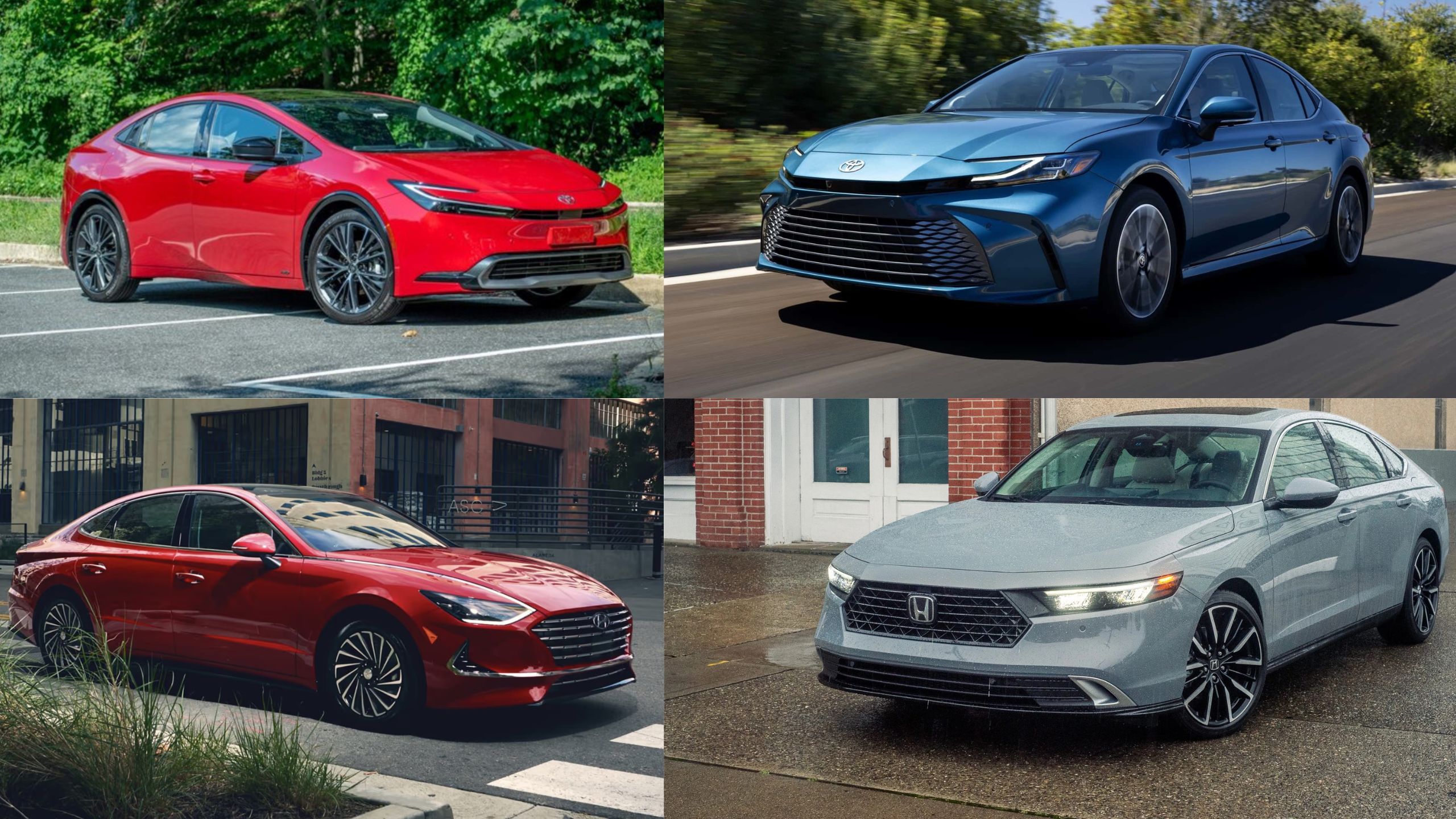For rideshare drivers, vehicle selection is arguably the most crucial business decision they’ll make. The right car can maximize profits through reliability, fuel efficiency, and passenger comfort, while minimizing downtime and maintenance costs.
Conversely, the wrong choice can quickly transform a promising side hustle into a financial nightmare. Rideshare driving subjects vehicles to punishing conditions, frequent stops and starts, extensive idling, constant door slamming, and accumulation of high mileage in compressed timeframes.
This accelerated wear and tear means rideshare vehicles age in “dog years” compared to those used for typical commuting. While many manufacturers design cars for the average driver covering 12,000-15,000 miles annually, rideshare drivers often triple this figure.
This guide explores five vehicles that consistently excel under these demanding conditions, retaining value while keeping drivers profitable, alongside five models notorious for rapid deterioration when pressed into rideshare service.
Top 5 Cars for Uber Drivers
Whether you’re a veteran driver looking to upgrade or contemplating entering the gig economy, these insights could significantly impact your financial success in the competitive rideshare marketplace.
1. Toyota Prius
The Toyota Prius has achieved near-legendary status among rideshare drivers, and for good reason. This hybrid pioneer delivers a combination of reliability, efficiency, and practicality that remains unmatched in the rideshare world.
With real-world fuel economy regularly exceeding 50 MPG in city driving precisely where rideshare drivers spend most of their time the Prius dramatically reduces one of the profession’s largest expenses.
Beyond its miserly fuel consumption, the Prius offers exceptional mechanical reliability. Its hybrid system has proven remarkably durable, with many drivers reporting minimal degradation in battery performance even after 200,000+ miles.
Toyota’s engineering philosophy prioritizes conservative design and thorough testing, resulting in powertrains that withstand constant use.
The regenerative braking system substantially reduces wear on friction brakes, extending service intervals and further reducing maintenance costs. The Prius’s interior might not exude luxury, but its practical design includes durable materials that withstand constant passenger use.
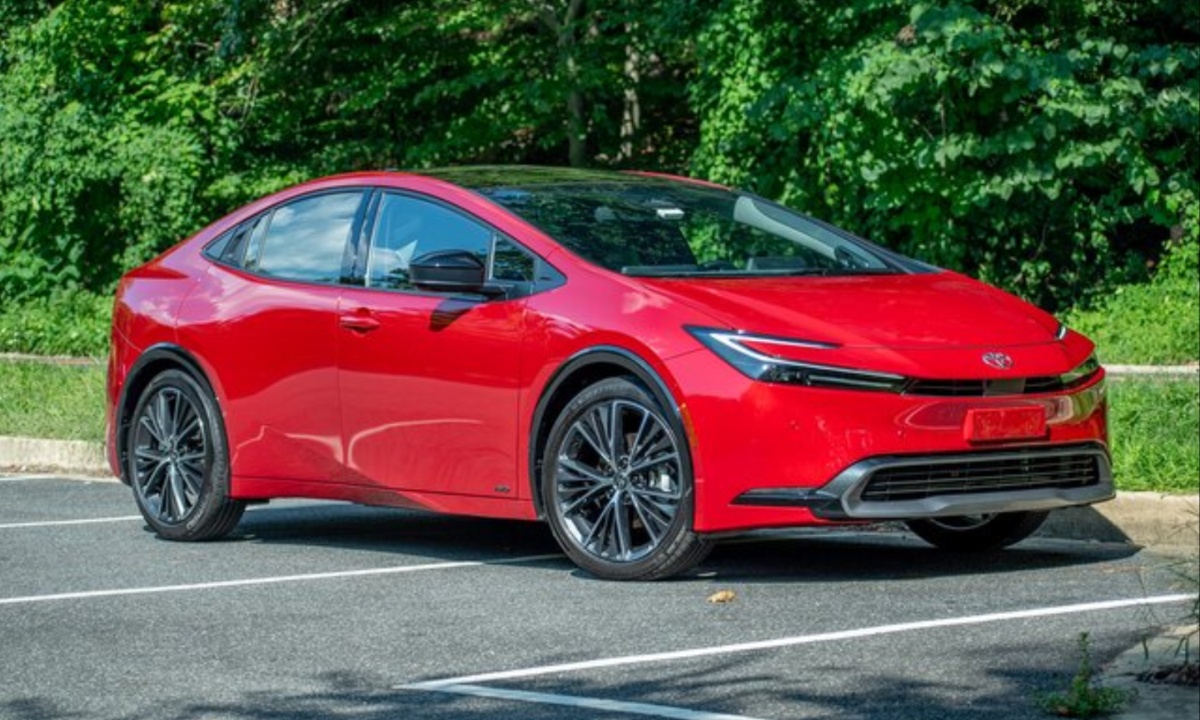
The hatchback configuration provides generous cargo space a significant advantage for airport pickups while the cabin offers adequate rear legroom for average-sized adults.
The raised seating position and excellent visibility facilitate navigation through congested urban environments where rideshare demand is highest.
Depreciation represents another area where the Prius excels. These vehicles hold value exceptionally well, partly due to their reputation for longevity and partly because of consistent demand from budget-conscious buyers and other rideshare drivers.
This value retention creates a favorable total cost of ownership calculation, even when factoring in the Prius’s higher initial purchase price compared to conventional sedans of similar size.
Perhaps most importantly for rideshare work, the Prius delivers operational reliability. Drivers report fewer mechanical issues that take the car off the road a critical factor when every day without rides means lost income.
The widespread adoption of the Prius among rideshare drivers also means abundant parts availability and mechanics experienced with these vehicles, minimizing downtime when service is needed. This combination of efficiency, durability, and practicality makes the Prius the benchmark against which other rideshare vehicles are measured.
2. Honda Accord Hybrid
The Honda Accord Hybrid represents an ideal middle ground for drivers seeking more passenger comfort than compact options without sacrificing the efficiency benefits of hybrid technology.
As a midsize sedan with legitimate five-passenger capacity, the Accord Hybrid satisfies Uber’s requirements for higher service tiers while delivering fuel economy that regularly exceeds 40 MPG in mixed driving conditions.
Honda’s reputation for engineering excellence is fully evident in the Accord Hybrid’s powertrain, which combines a remarkably efficient Atkinson-cycle engine with electric motors in a configuration that minimizes the mechanical complexity found in some other hybrid systems.
This simplicity translates to enhanced reliability the fewer components that can fail, the fewer problems drivers encounter. Honda’s hybrid system has proven remarkably durable in taxi and rideshare applications, with many vehicles surpassing 300,000 miles before requiring significant repairs.
Passenger comfort represents a significant advantage for the Accord Hybrid. The rear seat area offers generous legroom and headroom, addressing a common complaint about compact rideshare vehicles.
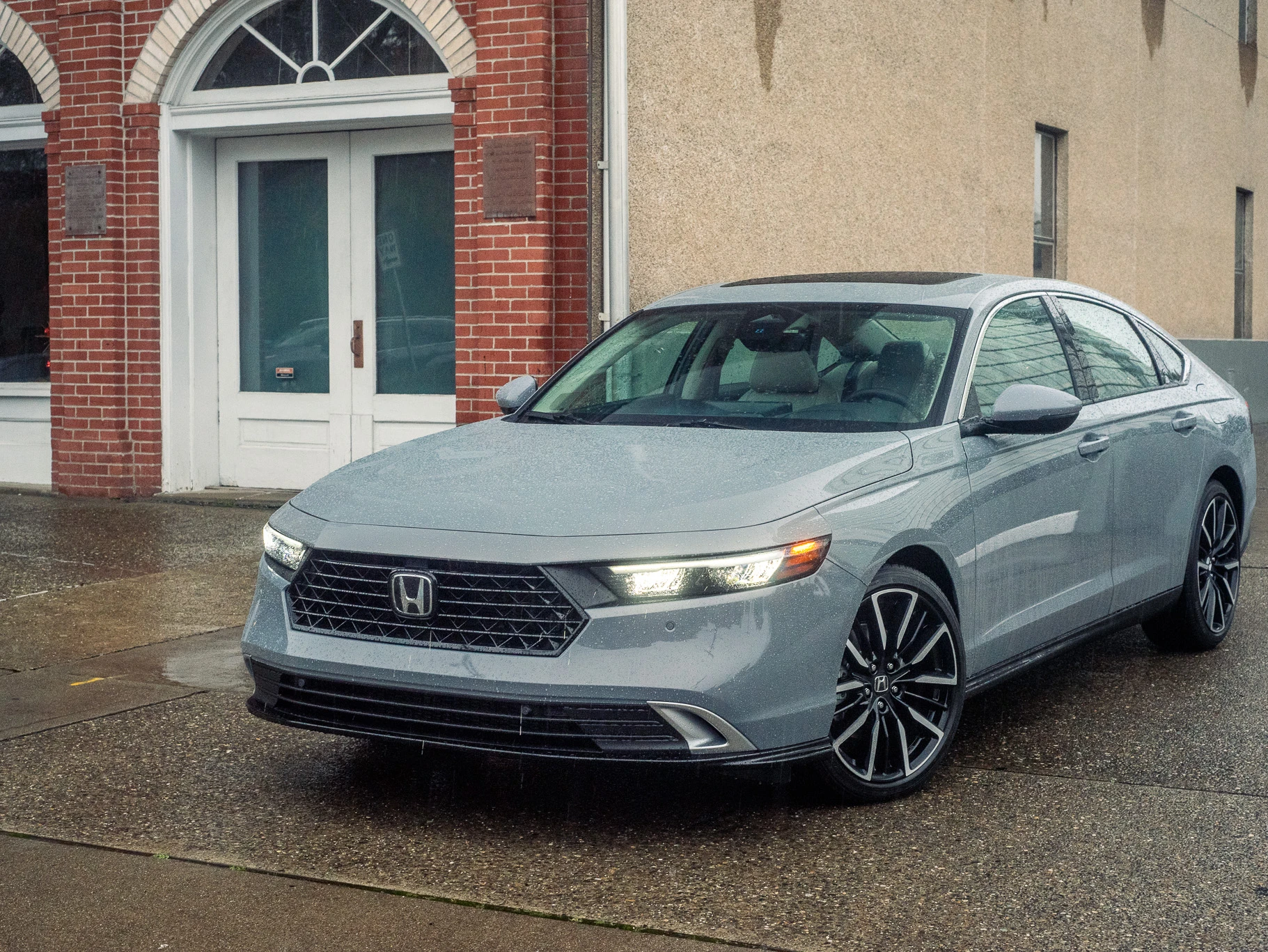
Interior materials strike a balance between durability and appearance, with seat fabrics engineered to withstand constant ingress and egress. The trunk, while slightly compromised by the hybrid battery, still offers adequate capacity for airport runs with multiple passengers.
The Accord Hybrid’s driving dynamics distinguish it from many economical rideshare options. The vehicle delivers responsive acceleration when needed for highway merging, with handling characteristics that encourage driver confidence in varied conditions.
The regenerative braking system operates smoothly, avoiding the awkward transitions between regenerative and friction braking that plague some hybrid vehicles. This refinement enhances the passenger experience while reducing driver fatigue during long shifts.
Maintenance requirements for the Accord Hybrid remain minimal, with oil change intervals extended to 10,000 miles and brake services needed less frequently due to regenerative braking.
Honda’s dealer network provides comprehensive support, though independent mechanics increasingly possess the knowledge and equipment to service these vehicles as they’ve become mainstream.
The Accord Hybrid’s moderate upfront cost is offset by strong resale value and low operating expenses, creating a compelling total ownership proposition for serious rideshare professionals who understand that passenger comfort can translate directly to higher ratings and better tips.
3. Toyota Camry Hybrid
The Toyota Camry Hybrid bridges the gap between the utilitarian Prius and premium rideshare options, offering a compelling blend of comfort, reliability, and efficiency that appeals to drivers focused on long-term profitability.
With fuel economy regularly exceeding 50 MPG in urban environments where most rideshare miles accumulate the Camry Hybrid delivers operational efficiency that dramatically improves profit margins in an industry where margins are notoriously thin.
Toyota’s hybrid system benefits from decades of refinement, resulting in exceptional durability evidenced by the numerous Camry Hybrids in taxi fleets that surpass 500,000 miles without major powertrain issues.
The system’s design minimizes wear on mechanical components, with the electric motors handling low-speed acceleration and the gasoline engine operating primarily in its optimal efficiency range.
This engineering approach reduces strain on the engine, transmission, and braking system the very components that typically fail first in vehicles subjected to rigorous rideshare duty cycles.
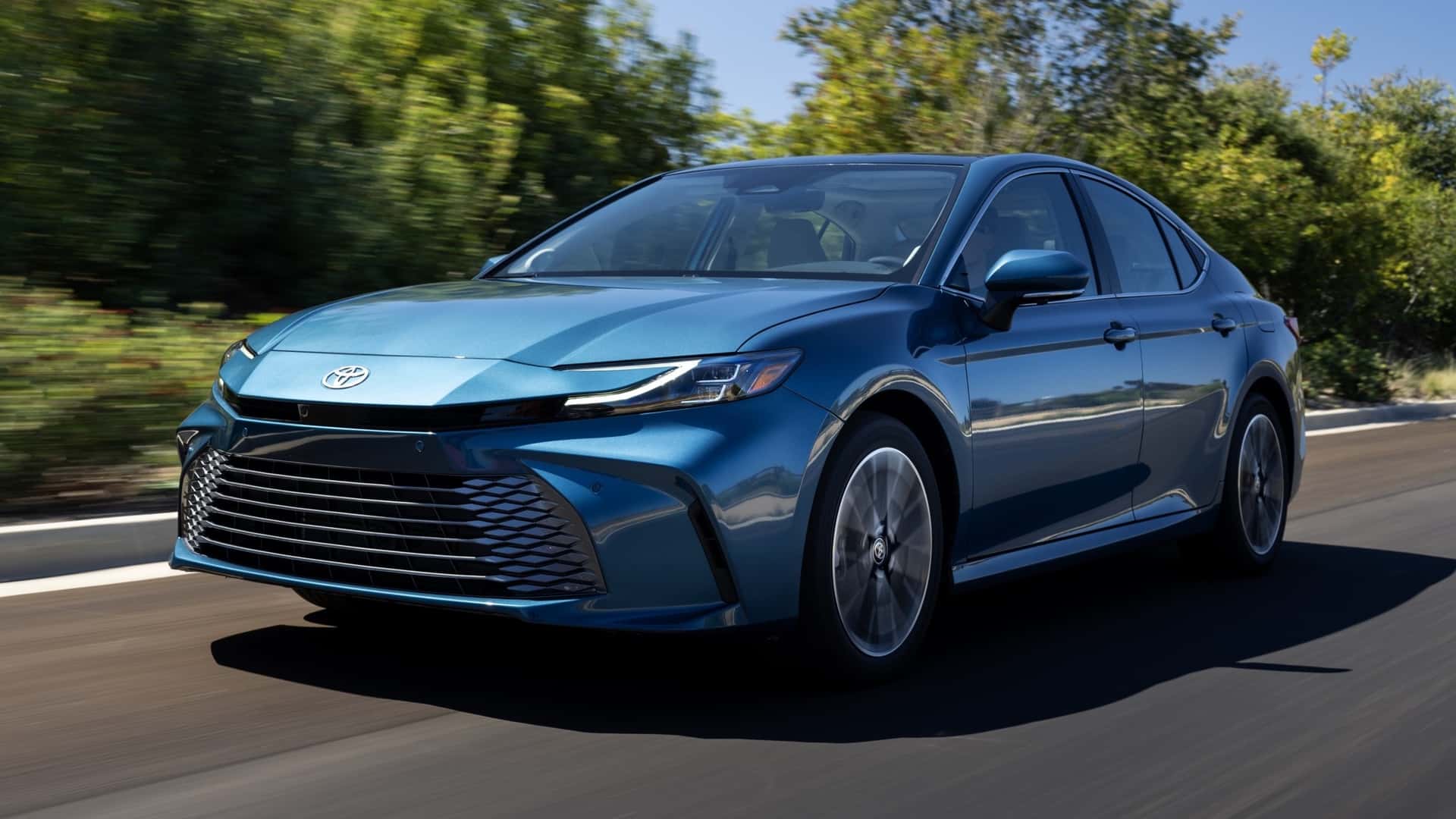
Passenger accommodation stands out as a particular strength of the Camry Hybrid. The spacious rear seat provides generous legroom and headroom, while the cabin width comfortably accommodates three adults across the back seat a crucial consideration for maximizing earning potential through higher-capacity ride requests.
Interior materials strike an effective balance between appearance and durability, with seat fabrics and touchpoints engineered to withstand constant use without rapid deterioration.
From a driver’s perspective, the Camry Hybrid offers exceptional ergonomics during extended shifts. The seating position provides good visibility, controls fall readily to hand, and the hybrid powertrain operates with minimal noise or vibration factors that significantly reduce fatigue during 8-12 hour driving sessions.
The infotainment system integrates seamlessly with rideshare applications, while advanced safety features help protect against the raised accident risk inherent in extensive urban driving.
The Camry Hybrid’s appeal extends beyond its operational attributes to financial considerations. While the initial purchase price exceeds that of conventional sedans, remarkably strong resale values mitigate the higher acquisition cost.
Toyota’s comprehensive warranty coverage provides additional peace of mind, though these vehicles rarely require warranty service beyond routine maintenance.
For drivers committed to rideshare work for multiple years, the Camry Hybrid’s combination of durability, efficiency, and comfort creates a compelling value proposition that directly enhances profitability in a challenging gig economy environment.
4. Hyundai Sonata Hybrid
The Hyundai Sonata Hybrid has emerged as a dark horse contender in the rideshare vehicle market, offering compelling advantages that savvy drivers increasingly recognize.
Chief among these is exceptional value the Sonata Hybrid typically costs thousands less than comparable hybrid sedans from Japanese manufacturers while delivering similar fuel economy, averaging 45-50 MPG in urban driving conditions where rideshare vehicles predominantly operate.
Hyundai’s dramatic quality improvements over the past decade have transformed the brand’s reputation, with the Sonata Hybrid benefiting from robust engineering that stands up to the rigors of rideshare work.
The hybrid powertrain pairs a direct-injection gasoline engine with an electric motor in a configuration that prioritizes smoothness and refinement qualities that translate directly to passenger comfort and satisfaction.
The lithium-ion battery pack carries an industry-leading warranty that transfers to subsequent owners, addressing a common concern about hybrid vehicle purchases.
Passenger accommodations represent a particular strength of the Sonata Hybrid. The cabin features class-leading rear legroom, allowing even tall passengers to sit comfortably without compromising front seat positions.
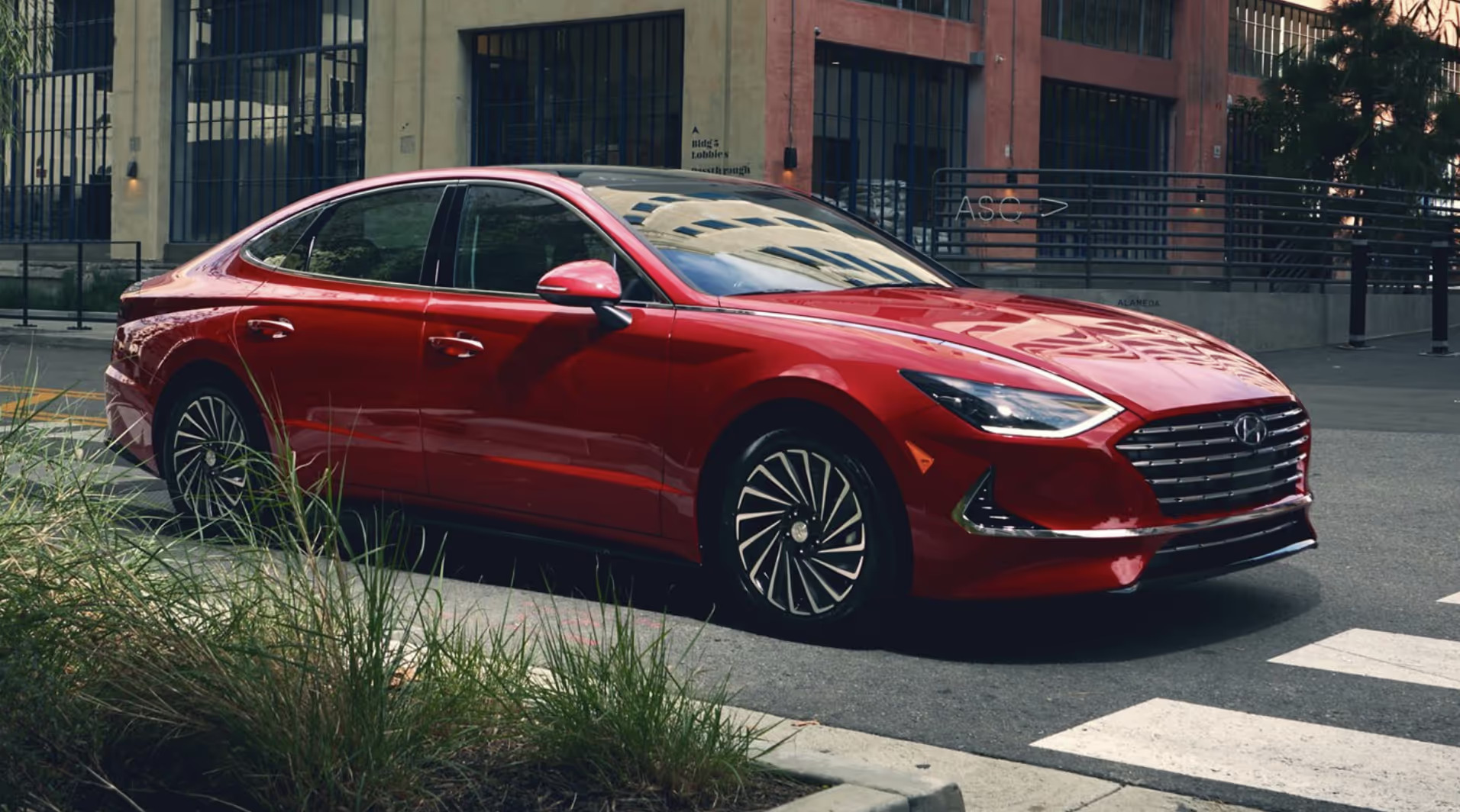
The interior design incorporates durable materials at major touchpoints, with seats that resist wear while maintaining appearance after thousands of passenger entries and exits.
The trunk preserves full capacity despite the hybrid battery packaging, providing space for multiple large suitcases during airport runs. From a driver’s perspective, the Sonata Hybrid offers several features that enhance the ownership experience.
The infotainment system includes wireless smartphone integration that simplifies the constant toggling between navigation and rideshare apps.
The driver assistance package provides adaptive cruise control and lane following assistance that reduce fatigue during long shifts, while the comprehensive warranty coverage including a 10-year/100,000-mile powertrain warranty provides peace of mind during the critical early years of rideshare service.
Perhaps most significantly for rideshare applications, the Sonata Hybrid has demonstrated impressive reliability metrics in high-mileage scenarios.
While it lacks the decades-long proven track record of some competitors, real-world experience from fleet operators shows minimal powertrain issues even beyond 150,000 miles.
Maintenance costs remain reasonable, with extended service intervals and widely available parts keeping operating expenses in check.
The Sonata Hybrid’s combination of acquisition value, operating efficiency, passenger comfort, and emerging reliability makes it an increasingly popular choice among rideshare drivers who calculate total cost of ownership rather than simply following conventional wisdom about vehicle selection.
Also Read: 5 Cars That Fit Outdoor Gear Perfectly and 5 That Cant Carry Anything
5. Kia Niro
The Kia Niro represents one of the most versatile and pragmatic options for rideshare drivers, available in hybrid, plug-in hybrid, and fully electric variants to suit different operating environments and driver preferences.
The conventional hybrid model, most popular among rideshare professionals, delivers consistent fuel economy exceeding 50 MPG in urban settings without requiring any adaptation in driving habits or infrastructure.
The Niro’s crossover design provides several advantages specifically relevant to rideshare work. The raised seating position improves visibility in congested urban environments where identifying passengers and going through the complex traffic patterns is critical.
The slightly higher ride height facilitates passenger entry and exit, particularly valuable for elderly riders or those with mobility limitations who may struggle with lower-slung sedans.
Despite its compact external dimensions, which enhance maneuverability in city centers, the Niro offers surprisingly generous interior space with rear legroom competitive with midsize sedans.
Durability factors heavily into the Niro’s rideshare suitability. The interior features robust materials at high-contact points with seat fabrics specifically engineered to resist wear and staining.
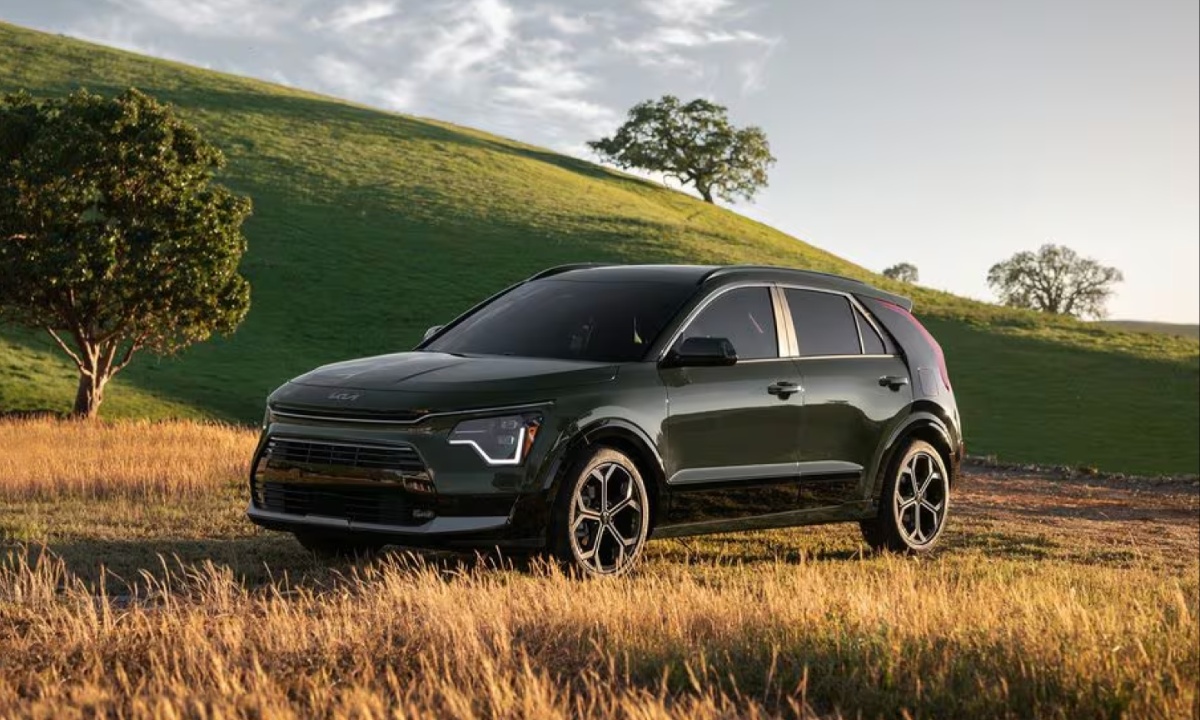
The cargo area includes a flat load floor that accommodates multiple pieces of luggage, while the rear hatch design allows for larger or oddly shaped items that sedan trunks cannot handle versatility that enables drivers to accept a wider range of ride requests.
Kia’s engineering philosophy emphasizes reliability through simplicity, with the Niro’s hybrid system using proven components shared with Hyundai’s hybrid models.
This approach ensures parts availability and service familiarity as these vehicles age. The regenerative braking system reduces wear on conventional friction brakes, extending service intervals for a major maintenance expense.
The powertrain controller manages the transition between electric and gasoline propulsion modes seamlessly, enhancing both the passenger experience and mechanical longevity.
The financial case for the Niro is particularly compelling for rideshare applications. The vehicle typically costs less than comparably equipped hybrid sedans while delivering equivalent or better fuel economy.
Kia’s industry-leading warranty coverage protects against major expenses during the early high-mileage period when rideshare vehicles accumulate miles at three to four times the rate of personal vehicles.
While resale values don’t match those of some Japanese alternatives, the lower acquisition cost often compensates for this difference in total ownership calculations.
For drivers seeking maximum versatility, efficiency, and value in a rideshare vehicle, the Niro’s thoughtful design and proven reliability make it an excellent choice.
5 Cars to Avoid for Uber
Choosing the right car for Uber driving can make or break your success on the platform. While many vehicles look good on paper, not all of them are built to handle the daily grind of rideshare work.
Some are too cramped, others guzzle gas, and a few simply aren’t reliable enough to keep you on the road and making money.
In this article, we’re cutting through the noise to spotlight five cars you should steer clear of if you want to avoid headaches, higher costs, and unhappy passengers. Let’s get into it.
1. Nissan Altima (2013-2018)
The Nissan Altima from model years 2013-2018 represents perhaps the most problematic choice for rideshare drivers, with a particular Achilles’ heel that has rendered thousands of these vehicles prematurely unusable.
At the heart of the issue lies Nissan’s continuously variable transmission (CVT), which exhibits catastrophic failure rates under the demanding conditions of rideshare work.
These transmissions typically begin exhibiting problems around 60,000-80,000 miles a threshold that rideshare drivers reach quickly with symptoms including shuddering, delayed engagement, overheating, and ultimately complete failure requiring replacement at costs exceeding $4,000.
The CVT’s engineering deficiencies become particularly apparent under the specific driving patterns of rideshare work.
Frequent stops and starts place tremendous stress on the transmission’s belt and pulley system, while extended idling periods waiting for ride requests cause inadequate cooling that accelerates wear.
The transmission fluid heat exchanger proves insufficient for maintaining proper operating temperatures during extended city driving, creating a cascade of problems that eventually render the vehicle inoperable.
Numerous class-action lawsuits have addressed these issues, but the extended warranty programs offer little comfort to high-mileage rideshare drivers.
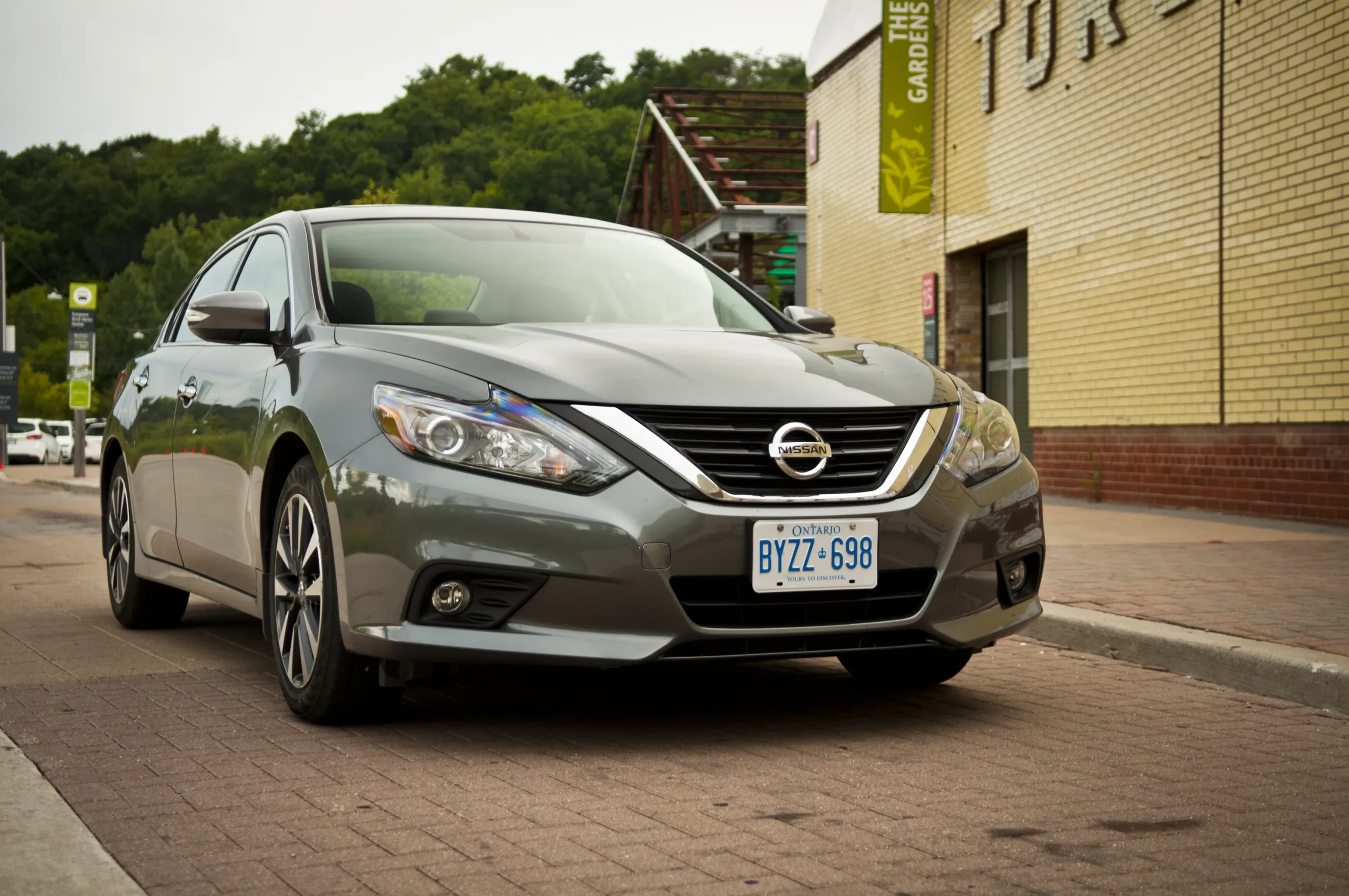
Beyond the transmission failings, the Altima demonstrates additional weaknesses that manifest rapidly under rideshare conditions.
The suspension components, particularly front control arms and rear trailing arms develop premature wear that creates unsettling noises and handling characteristics.
The electric power steering system commonly fails around 100,000 miles, with replacement modules costing upwards of $1,000. The interior materials deteriorate rapidly with constant passenger use, with seat bolstering collapsing and dashboard surfaces developing tactile stickiness that proves nearly impossible to clean.
Fuel efficiency, while initially adequate, degrades more rapidly than competitors as the CVT begins to slip and engine performance suffers from carbon buildup a particular issue with Nissan’s implementation of direct injection.
The resulting increase in operating costs occurs precisely when maintenance expenses also begin to escalate, creating a financial double-jeopardy for drivers who selected these vehicles based on their attractive purchase price.
Perhaps most damaging for rideshare drivers, these Altimas experience precipitous depreciation that accelerates once the vehicle exceeds 100,000 miles and the transmission issues become widely apparent.
This depreciation transforms what appeared to be an economical choice into a financial liability, with many drivers finding themselves owing more on their financing than the vehicle is worth, precisely when major repair bills begin appearing.
The combination of serious mechanical deficiencies, accelerated wear patterns, and catastrophic depreciation makes these Altimas perhaps the worst possible choice for dedicated rideshare work.
2. Chevrolet Cruze (2011-2016)
The Chevrolet Cruze from model years 2011-2016 presents rideshare drivers with a perfect storm of reliability issues that become magnified under the demanding conditions of commercial use.
These vehicles feature multiple critical failure points that typically emerge just as they approach the mileage thresholds that rideshare drivers reach within their first year of operation.
The 1.4-liter turbocharged engine at the heart of most Cruze models suffers from numerous design deficiencies that become apparent under extended use.
The PCV system incorporates a valve built into the valve cover that fails regularly, causing oil consumption, check engine lights, and eventually damaged turbochargers.
The water pump positioned in a location requiring substantial disassembly to access commonly fails between 60,000-80,000 miles, with failure often resulting in overheating before drivers recognize the symptoms.
The thermostat housing, constructed from plastic, becomes brittle and cracks, causing coolant leaks that further contribute to overheating incidents.
Transmission issues plague both the manual and automatic variants. The automatic transmission develops harsh shifting characteristics and ultimately fails to engage properly as it accumulates mileage, while the manual transmission’s clutch assembly demonstrates premature wear under the frequent stop-and-go conditions typical of rideshare work.
The transmission cooling system proves inadequate for maintaining proper operating temperatures during extended city driving sessions common in rideshare applications.
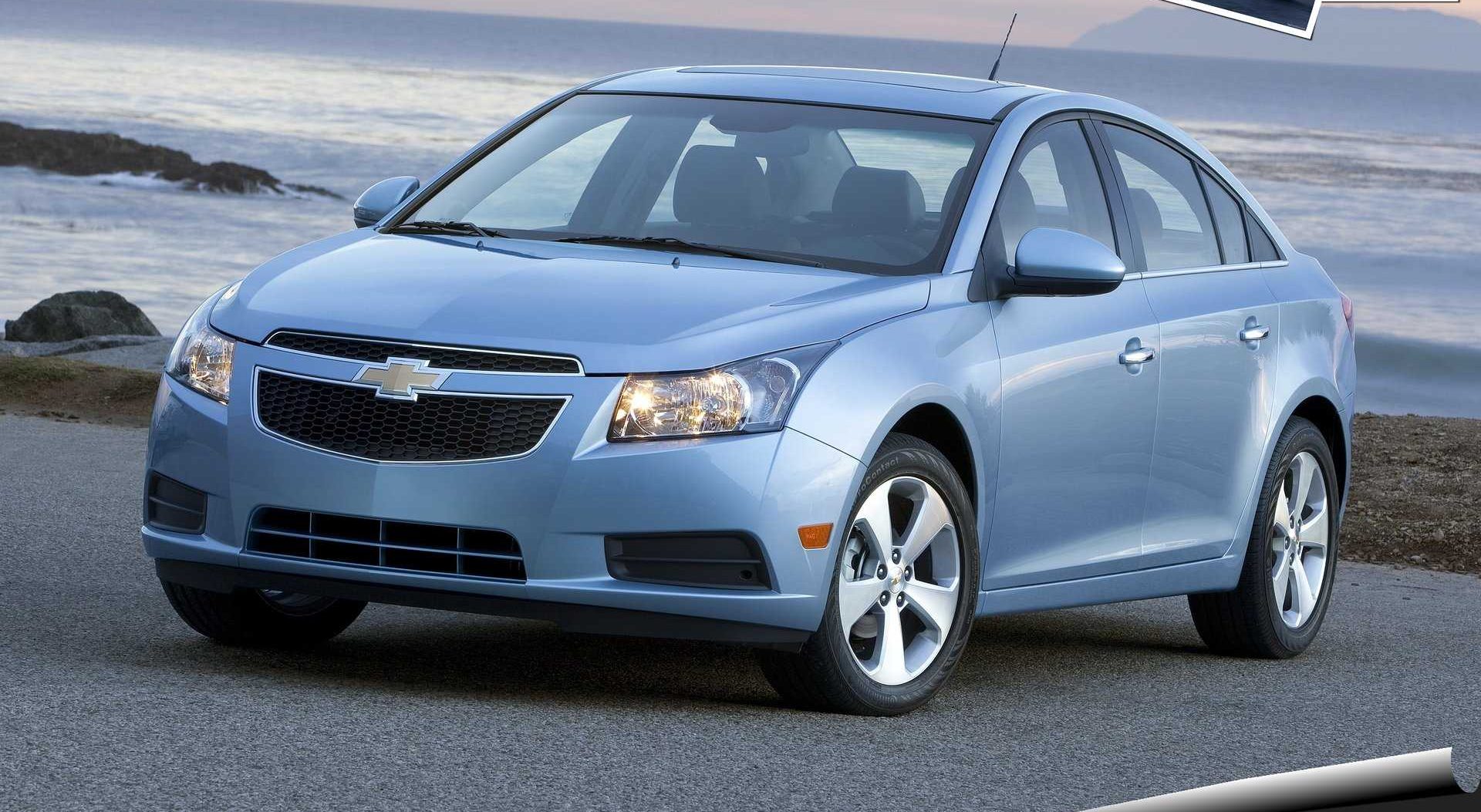
Electrical system failures create particularly frustrating scenarios for rideshare drivers. The negative battery cable design creates excessive resistance that causes intermittent starting issues and electrical gremlins affecting everything from the infotainment system to critical engine management components.
These issues manifest unpredictably, sometimes stranding drivers with passengers in the vehicle a situation that inevitably leads to poor ratings and lost income.
The Cruze’s interior materials deteriorate rapidly under commercial use. The seat fabric develops wear patterns within months of rideshare service, while the steering wheel covering delaminates under the constant handling of high-mileage driving.
Dashboard surfaces develop squeaks and rattles that passengers notice and mention in reviews. The trunk lining tears easily when handling luggage, creating an unprofessional appearance that affects passenger perception.
From a financial perspective, these Cruze models represent a particularly poor investment for rideshare work. The frequency and severity of repairs typically begin just as the factory warranty expires, creating substantial out-of-pocket expenses precisely when drivers should be maximizing profits.
Depreciation accelerates dramatically once these vehicles exceed 75,000 miles, as their reliability issues become widely known in the used car market.
The combination of frequent mechanical failures, expensive repair requirements, and rapid value deterioration makes these Cruze models fundamentally unsuited for the demands of rideshare driving.
3. Ford Focus (2012-2018)
The Ford Focus from 2012-2018 model years, particularly those equipped with the PowerShift dual-clutch automatic transmission, represents one of the most problematic vehicles ever pressed into rideshare service.
This transmission the subject of multiple class-action lawsuits resulting in hundreds of millions in settlements exhibits fundamental design flaws that become catastrophically apparent under the demanding conditions of rideshare driving.
The PowerShift transmission’s core issues stem from its dry-clutch design, which Ford implemented to improve fuel efficiency. Unlike traditional automatic transmissions with fluid coupling, this system uses computer-controlled clutches that require precise calibration and operation.
Under rideshare conditions, these clutches develop shuddering, hesitation, and jerky engagement that passengers immediately notice and mention in reviews.
The transmission control module frequently misinterprets sensor data, causing unpredictable behavior that worsens over time. By 60,000-80,000 miles a threshold rideshare drivers reach quickly many units require complete replacement at costs exceeding $3,000.
Beyond the transmission nightmare, these Focus models develop additional issues that compromise their rideshare suitability. The purge valve in the evaporative emissions system regularly fails, causing stalling and difficulty restarting particularly problematic when occurring between rides.
The rear suspension design incorporates bushings that deteriorate rapidly under commercial use, creating unsettling handling characteristics and uncomfortable rides for passengers.
The electronic throttle body commonly fails around 100,000 miles, causing dangerous stalling situations that strand drivers and passengers alike.
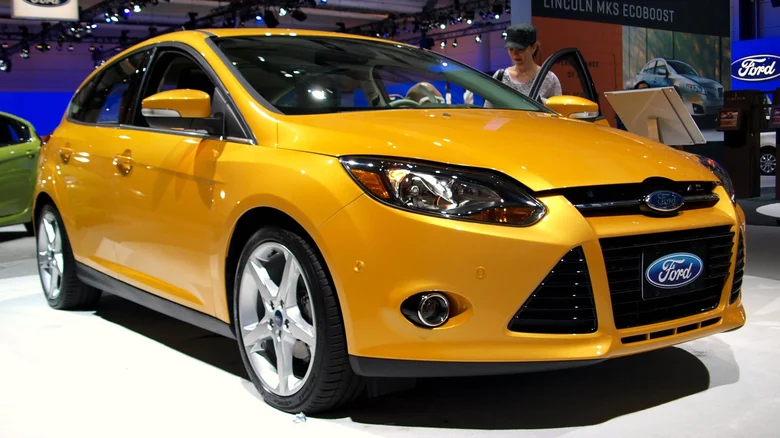
Interior durability represents another significant weakness. The seat fabrics wear through quickly at the bolsters and entry points, while the door panels and center console develop rattles that passengers perceive as indicators of poor vehicle condition.
The infotainment system controlled through the notorious MyFord Touch interface suffers from software glitches and unresponsive touchscreens that frustrate both drivers and riders attempting to adjust climate control or media settings.
From a business perspective, these Focus models create a particularly troubling scenario for rideshare drivers. Many purchased these vehicles specifically for their apparent fuel efficiency and affordable purchase price, only to discover their fundamental unsuitability for commercial use.
The frequent repairs create substantial downtime that directly impacts earning potential, while the rapid depreciation accelerated by widespread knowledge of the transmission issues creates negative equity situations for many owners.
Perhaps most telling about these vehicles’ rideshare unsuitability: Ford eventually abandoned this transmission design entirely after years of unsuccessful attempts to resolve its inherent flaws through software updates and component redesigns.
For rideshare drivers seeking reliable transportation that can withstand the rigors of commercial use, these Focus models represent perhaps the clearest example of a vehicle destined to fail prematurely under demanding conditions.
4. Mitsubishi Mirage (2014-Present)
The Mitsubishi Mirage represents a cautionary tale for rideshare drivers seduced by its attractive purchase price and headline-grabbing fuel economy figures.
While these factors might seem to create an ideal rideshare platform, the Mirage’s fundamental engineering compromises become painfully apparent once pressed into commercial service, typically rendering the vehicle unsuitable within a year of intensive use.
At the heart of the Mirage’s rideshare unsuitability lies its powertrain a three-cylinder engine producing just 78 horsepower paired with either a continuously variable transmission or manual gearbox.
This minimal power output creates safety concerns during highway merging or when carrying multiple passengers up inclines, situations that rideshare drivers encounter daily.
The engine must work at near-maximum capacity during normal driving, creating accelerated wear that manifests as oil consumption, timing chain issues, and ultimately reduced reliability precisely when drivers need their vehicles most.
The continuously variable transmission demonstrates particular vulnerability to the demands of rideshare work. The unit overheats during extended city driving, especially in warm climates or when loaded with passengers leading to accelerated wear on the belt and pulley system.
Failure typically occurs between 60,000-80,000 miles, a threshold rideshare drivers reach rapidly, with replacement costs often exceeding $4,000, a substantial percentage of the vehicle’s total value.
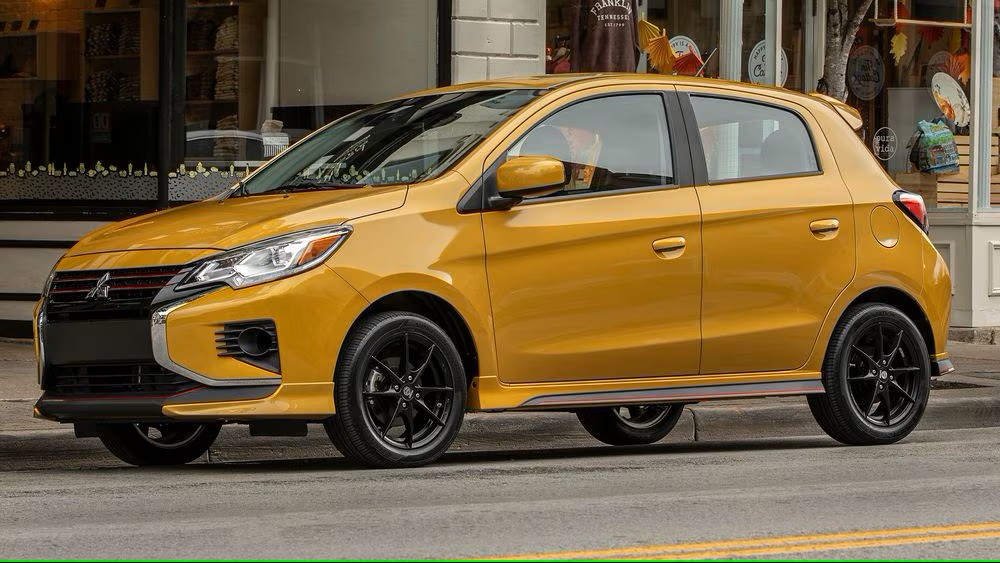
Passenger experience represents another critical weakness for rideshare applications. The Mirage’s minimal sound insulation creates a cacophony of road, wind, and engine noise that passengers consistently mention in negative reviews.
The suspension system designed for minimal weight rather than comfort transmits road imperfections directly to passengers, creating an unsettling ride quality.
The rear seat dimensions prove inadequate for adult passengers, with legroom and width falling well below competitor standards. These limitations directly impact driver ratings and, consequently, earning potential.
Structural durability issues emerge rapidly under commercial use. The thin-gauge sheet metal dents easily during luggage loading or minor parking lot incidents. Interior materials including seat fabrics, door panels, and dashboard surfaces show wear within months of rideshare service.
The climate control system proves inadequate for maintaining passenger comfort in extreme temperatures, with the air conditioning system struggling particularly when idling between rides in summer conditions.
From a business perspective, the Mirage creates a deceptive value proposition for rideshare drivers. While the initial purchase price and fuel economy figures appear attractive, the vehicle’s rapid depreciation among the worst in the industry creates negative equity situations for financed vehicles.
When combined with the frequent mechanical issues that remove the car from service, the total cost of ownership typically exceeds that of more substantial vehicles specifically designed for durability and passenger comfort.
For rideshare drivers seeking sustainable business operations, the Mirage represents a prime example of false economy that ultimately undermines profitability.
5. Dodge Dart (2013-2016)
The short-lived Dodge Dart represents one of the most problematic vehicles ever pressed into rideshare service, with numerous design and quality issues that become dramatically apparent under the demanding conditions of commercial use.
This model Dodge’s attempt to create a competitive compact offering following the Chrysler bankruptcy was discontinued after just four model years due to persistent quality concerns and poor market reception, factors that should immediately disqualify it from rideshare consideration.
Transmission failures represent the Dart’s most catastrophic weakness, with both the dual-clutch automatic and traditional automatic transmissions exhibiting alarming failure rates.
The dual-clutch unit suffers from electronic control module issues that create unpredictable shifting behavior and eventually complete failure, typically between 60,000-80,000 miles precisely when rideshare drivers have accumulated significant miles but not yet recouped their vehicle investment.
The traditional automatic develops harsh shifting characteristics before ultimately failing, with replacement costs frequently exceeding $3,500. Engine problems plague all Dart variants but prove particularly troublesome in the 1.4-liter turbocharged models.
The multiair valve system an innovative but complex valve actuation technology, develops failure patterns that create check engine lights, reduced performance, and eventually require expensive repairs.
The turbocharger oil supply lines leak regularly, creating both oil consumption issues and potential fire hazards. The timing belt rather than the more durable chain found in most competitors, requires replacement at 60,000 miles, an interval that rideshare drivers reach quickly and at substantial expense.
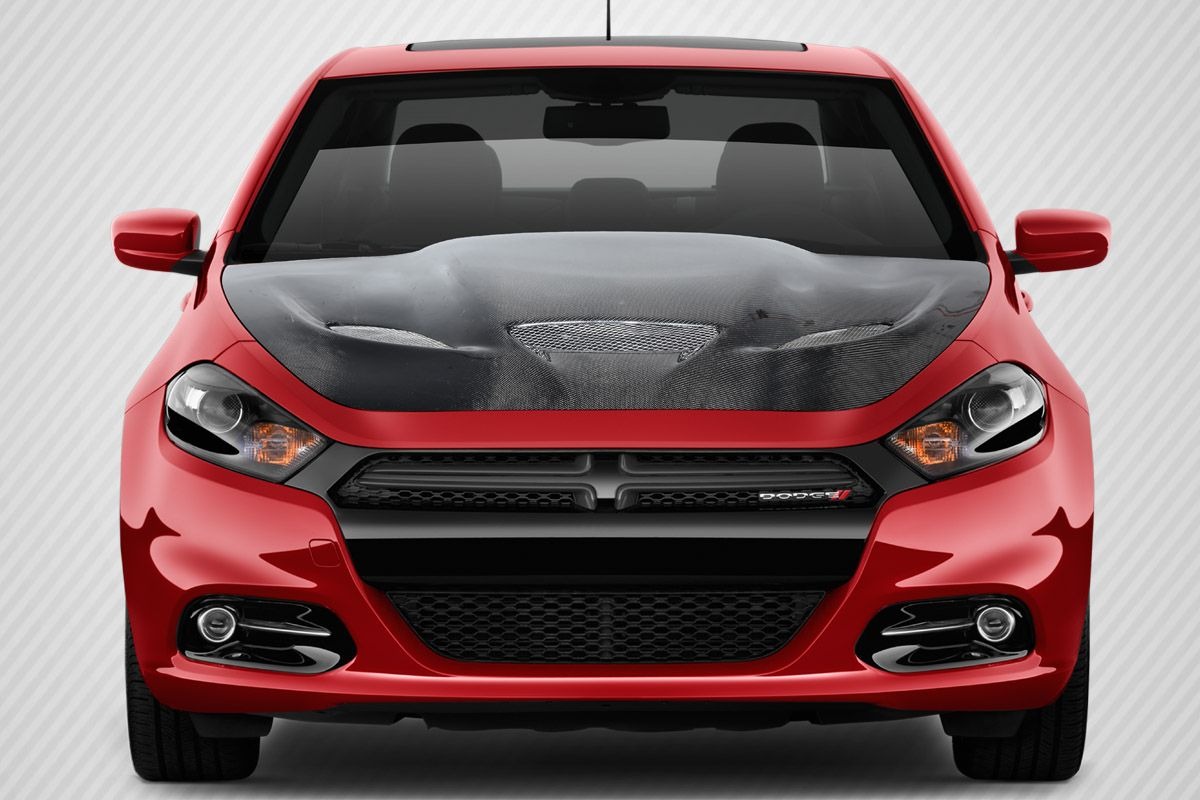
Electrical system gremlins create perhaps the most frustrating aspect of Dart ownership for rideshare drivers. The tipm (totally integrated power module) essentially the vehicle’s central electrical brain fails regularly, creating symptoms ranging from inoperative power windows to complete starting failure.
The infotainment system develops touchscreen deadspots and system crashes that render it unusable. The wiring harness design creates vulnerability to water intrusion, causing intermittent electrical failures that prove nearly impossible to diagnose and repair effectively.
Interior durability falls well below the standards required for commercial use. The seat fabrics wear through within months of rideshare service, while the door panel materials delaminate under normal use.
The center console design incorporates fragile plastic components that break under the constant use of rideshare driving entails. The trunk lining tears easily during luggage loading, creating an unprofessional appearance that passengers notice and mention in reviews.
From a business perspective, the Dart creates a particularly problematic scenario for rideshare drivers. Parts availability has diminished significantly since production ended, creating extended repair delays that directly impact earning potential.
Dodge dealerships often lack technicians with specific Dart experience, as the model’s short production run limited institutional knowledge development.
Most significantly, these vehicles experience catastrophic depreciation among the worst in the compact segment creating negative equity situations for owners while simultaneously delivering poor reliability that increases operational costs.
For rideshare drivers seeking sustainable business operations, the Dart represents perhaps the clearest example of a vehicle fundamentally unsuited for commercial application.
Also Read: 5 Vehicles With Great Crash Protection and 5 That Crumble

